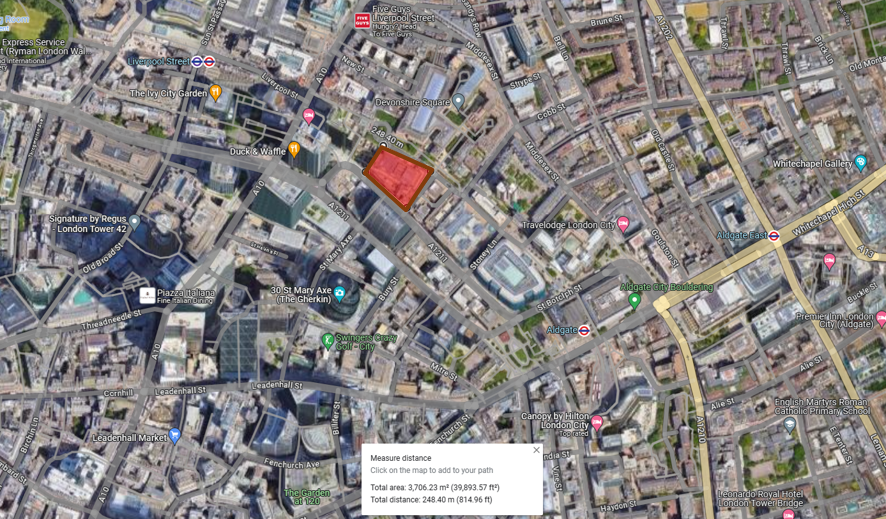
The site resides within London’s densely urban landscape, surrounded by skyscrapers and high-rise structures. The analysis of London’s environment reveals it as a temperate maritime climate, experiencing four distinct seasons: Spring, Summer, Autumn, and Winter.



A study of the sun path highlights extended sun hours in Spring and Summer, diminishing in Autumn and Winter, affecting solar radiation from 25.86 kWh/m^2 to 14.79 kWh/m^2. The Windrose depicts peak average wind speeds of 8.14m/s in Winter, dropping to 4.82m/s in Summer.

The city faces temperature differences between air (18.50) and land (50), with an annual 5-degree increase projected to escalate by 540% by 2080 compared to 2000, impacting human health, particularly heat-related conditions.
In response, our building design prioritizes natural ventilation and efficient solar heat usage to alleviate heat-related health concerns.
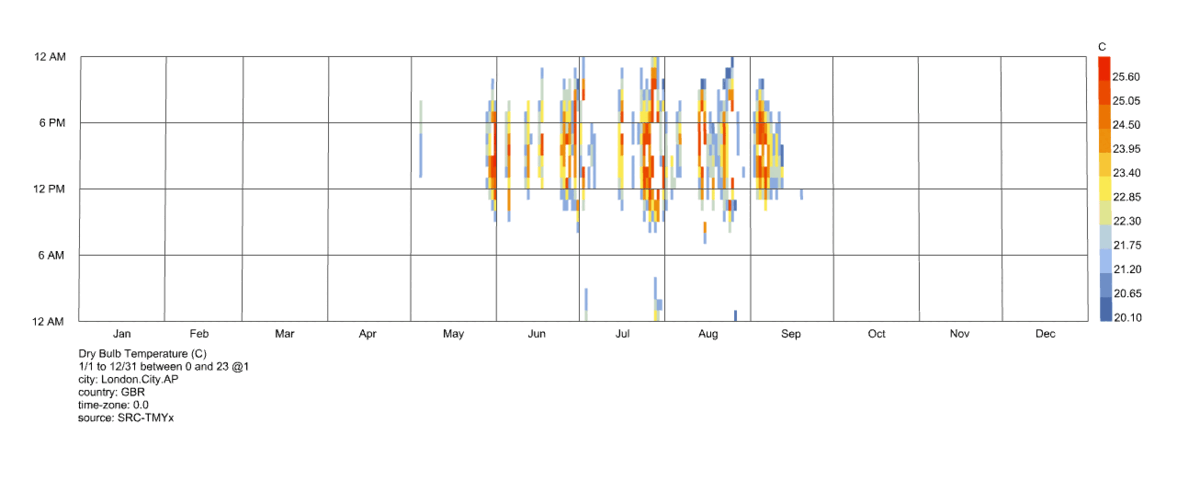
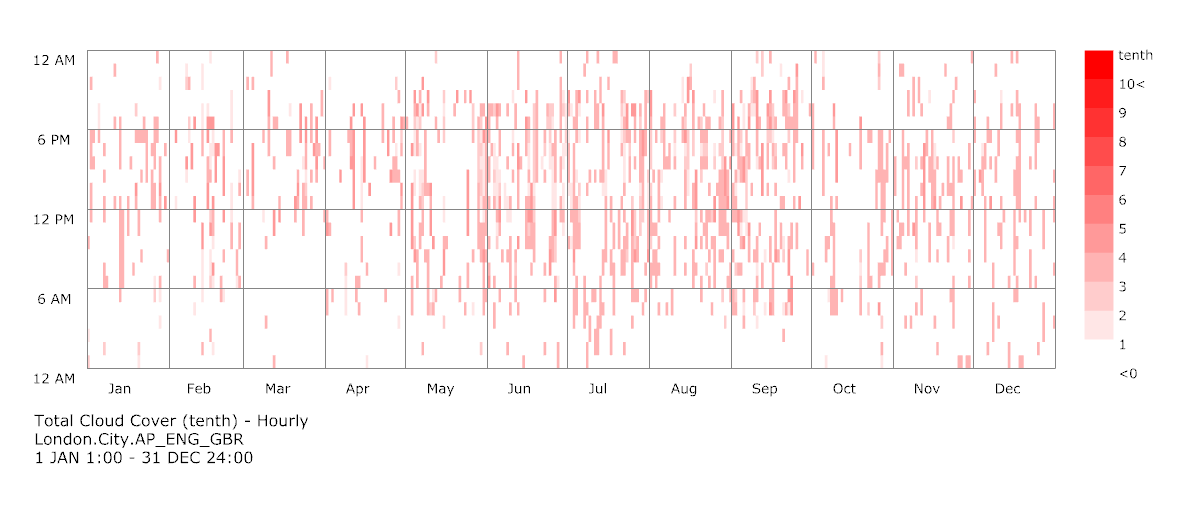
Considering the dry bulb temperature and cloud cover graphs, London’s climate is cold with high cloud cover, prompting our aim to maximize sunlight inside the building.

Initially, adopting a Cuboid form resulted in a high % of low sun hours, around 70% during winter. However, by altering the orientation and twisting of the structure, we managed to decrease the % of low sun hours significantly.
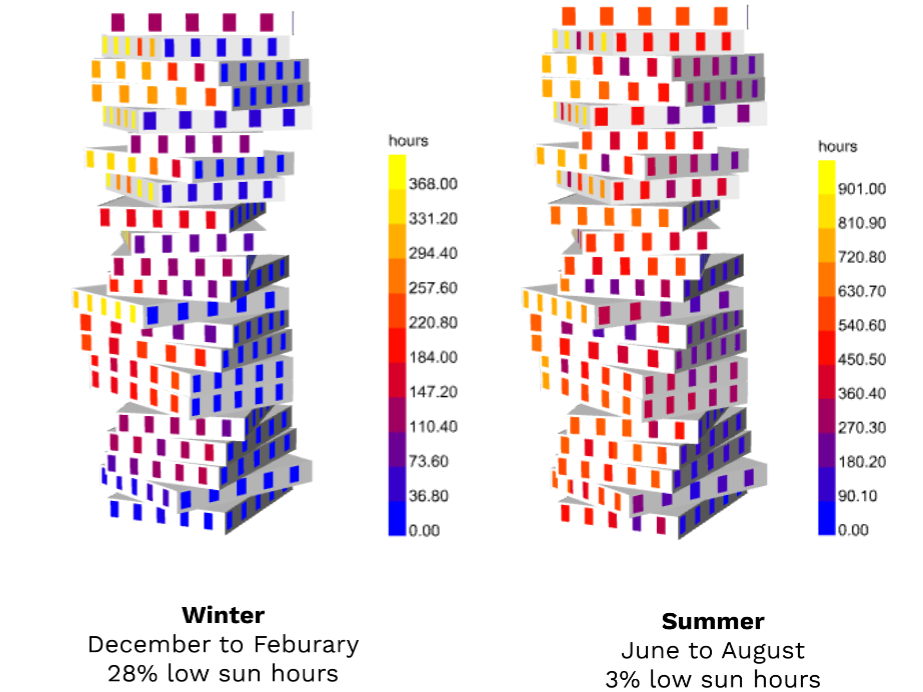
Using the Genetic Algorithm Galapagos, we aimed to optimize the twisting of the floor plate to maximize the daylight factor while simultaneously achieving lower values for % of low sun hours. This approach significantly reduced % of low sun hours, bringing it down to 28% in winter and an impressive 3% in summer.
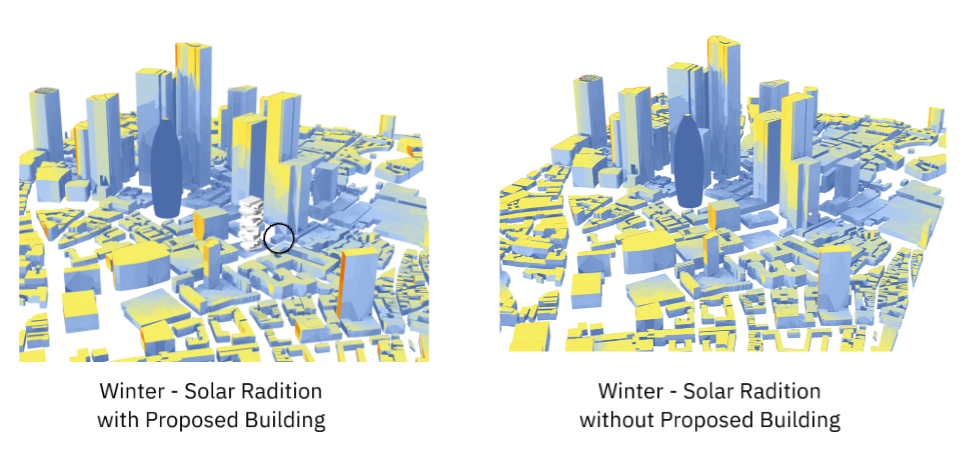
Upon evaluating the building’s impact on its surroundings, we’ve observed that the proposed high setback values effectively minimize its influence on the immediate environment.
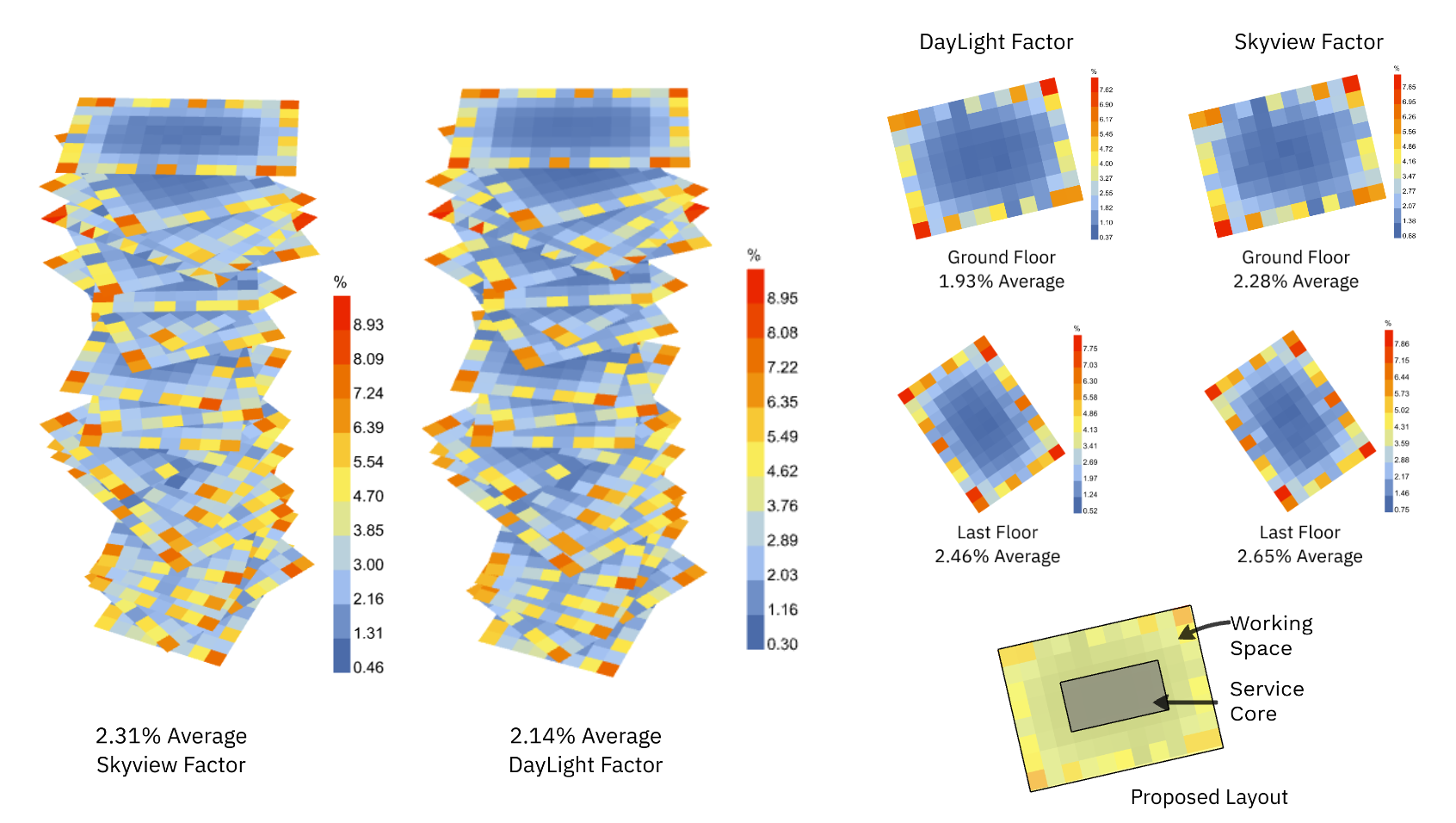
Observing daylight and sky view factor analysis, the center core of the building receives limited daylight. To address this, we propose a service core in the center, surrounded by working spaces.
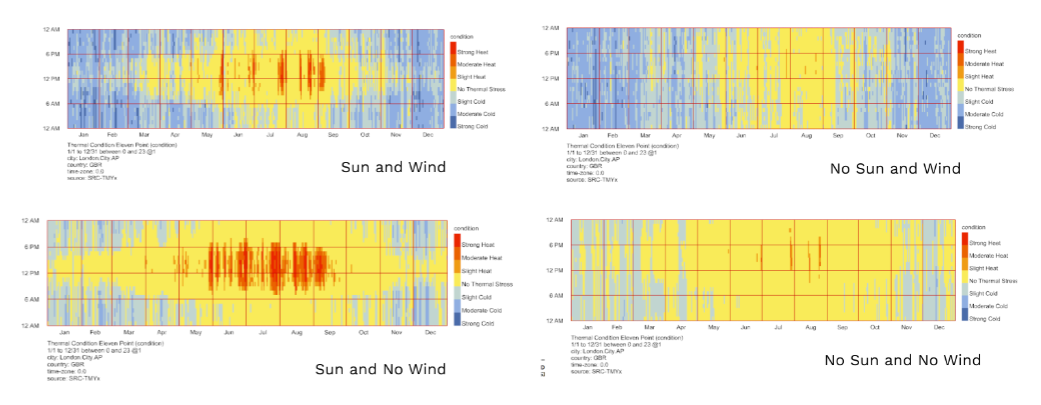
An analysis of thermal comfort across various wind and sun conditions revealed that discomfort is minimized in windless situations
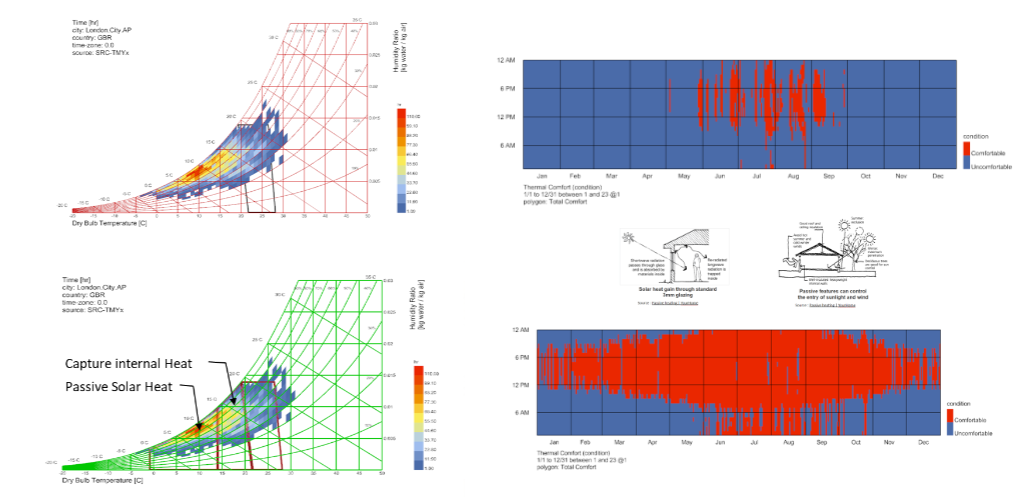
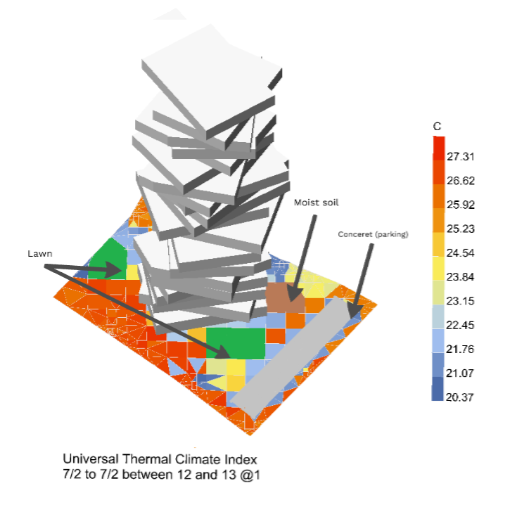
Further examination of thermal comfort levels indicated that optimal comfort is mainly experienced during summer. To ensure year-round comfort, we incorporated a passive heating system into the building’s design. Evaluating the Universal Thermal Climate Index (UTCI) in an area with landscaping and parking, we found a comfortable temperature of 27 degrees, in line with London’s temperature standards.
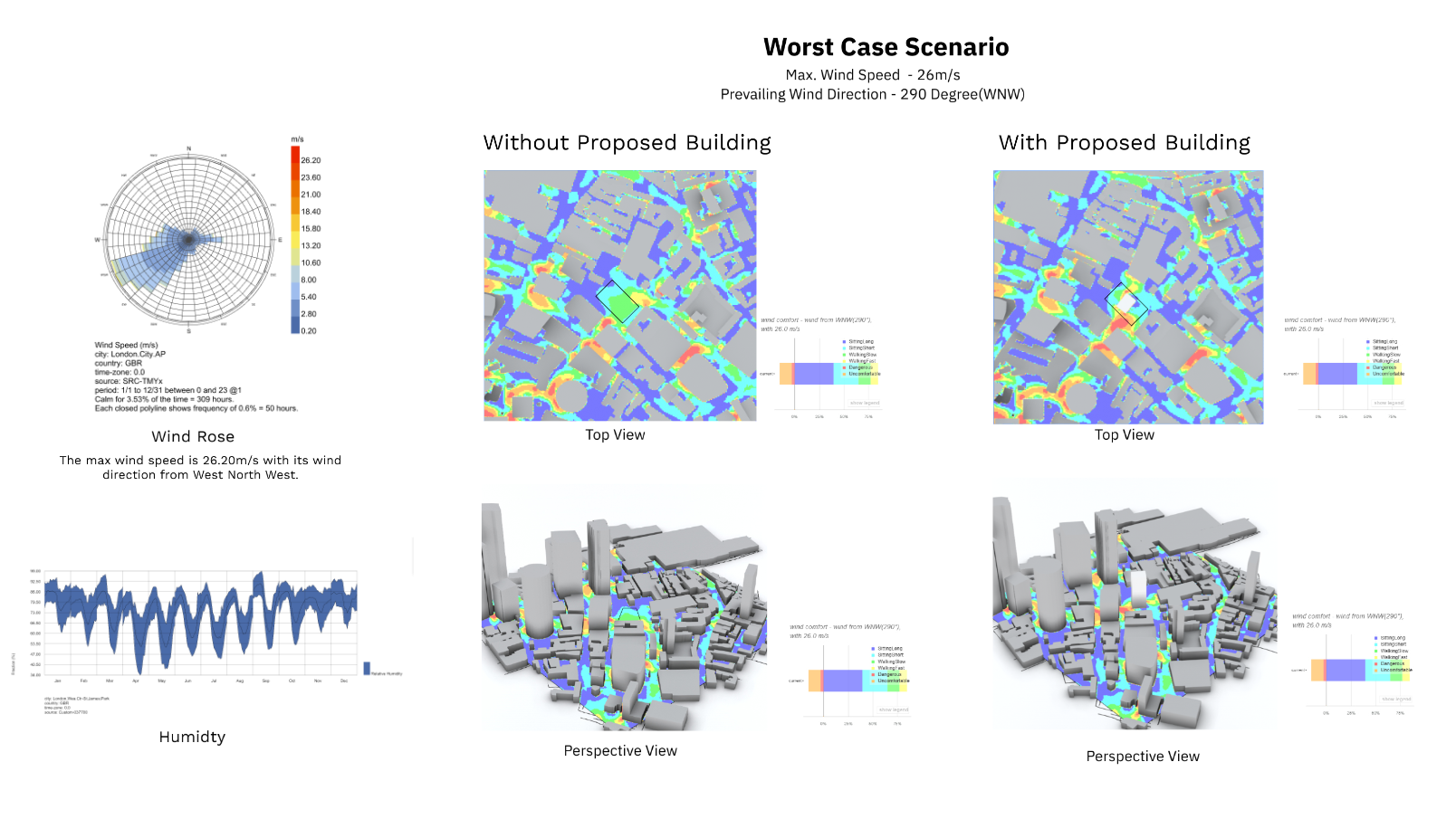
Given London’s high humidity, wind becomes a crucial design factor. Analyzing the wind rose indicates the highest wind speed of 26m/s from the west-northwest direction. Our design accounts for wind comfort, minimizing dangerous zones.
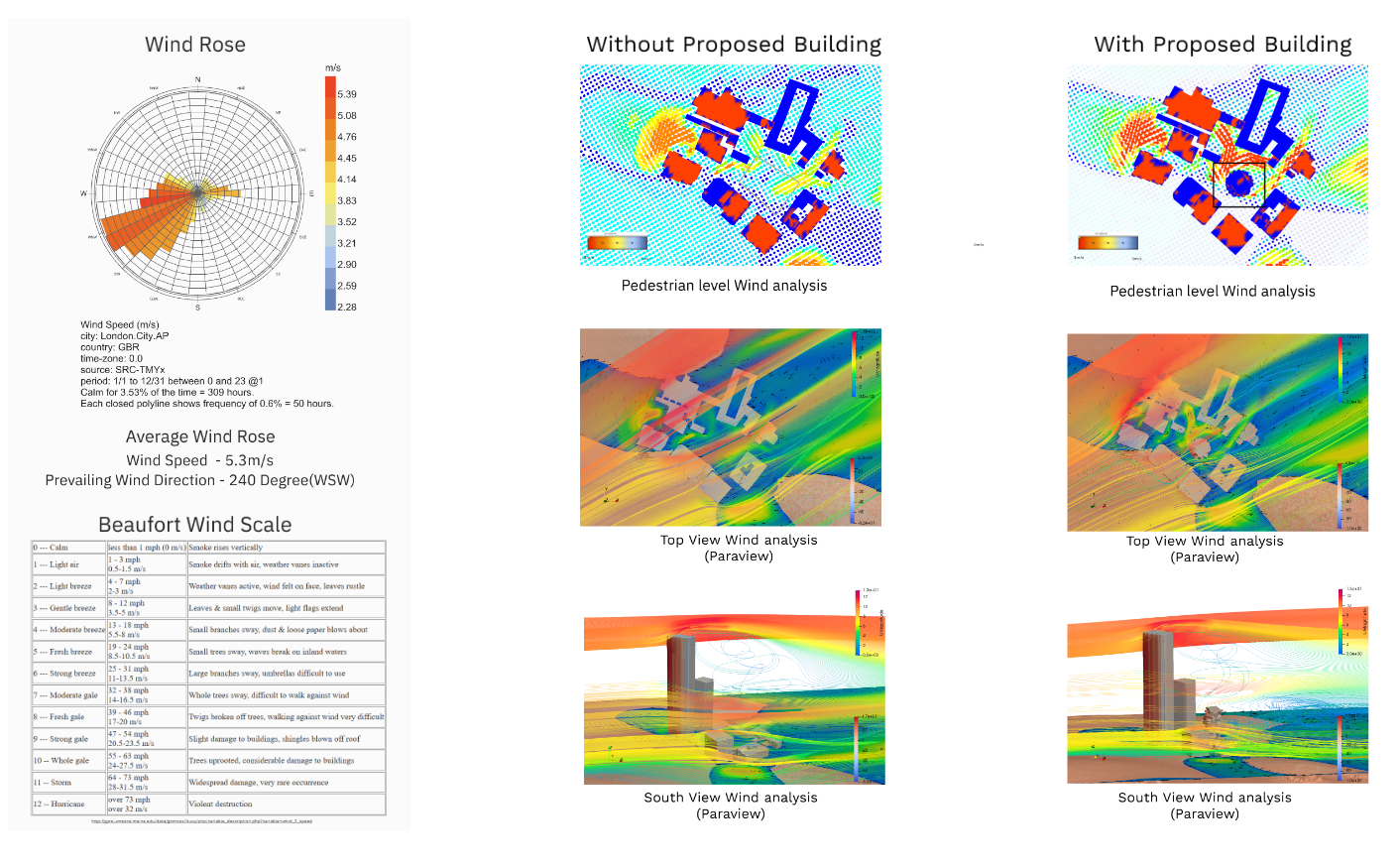
Through Computational Fluid Dynamics (CFD) simulations with an average wind speed of 5m/s, our building generates moderate to fresh breeze zones as per the Beaufort Wind Scale.
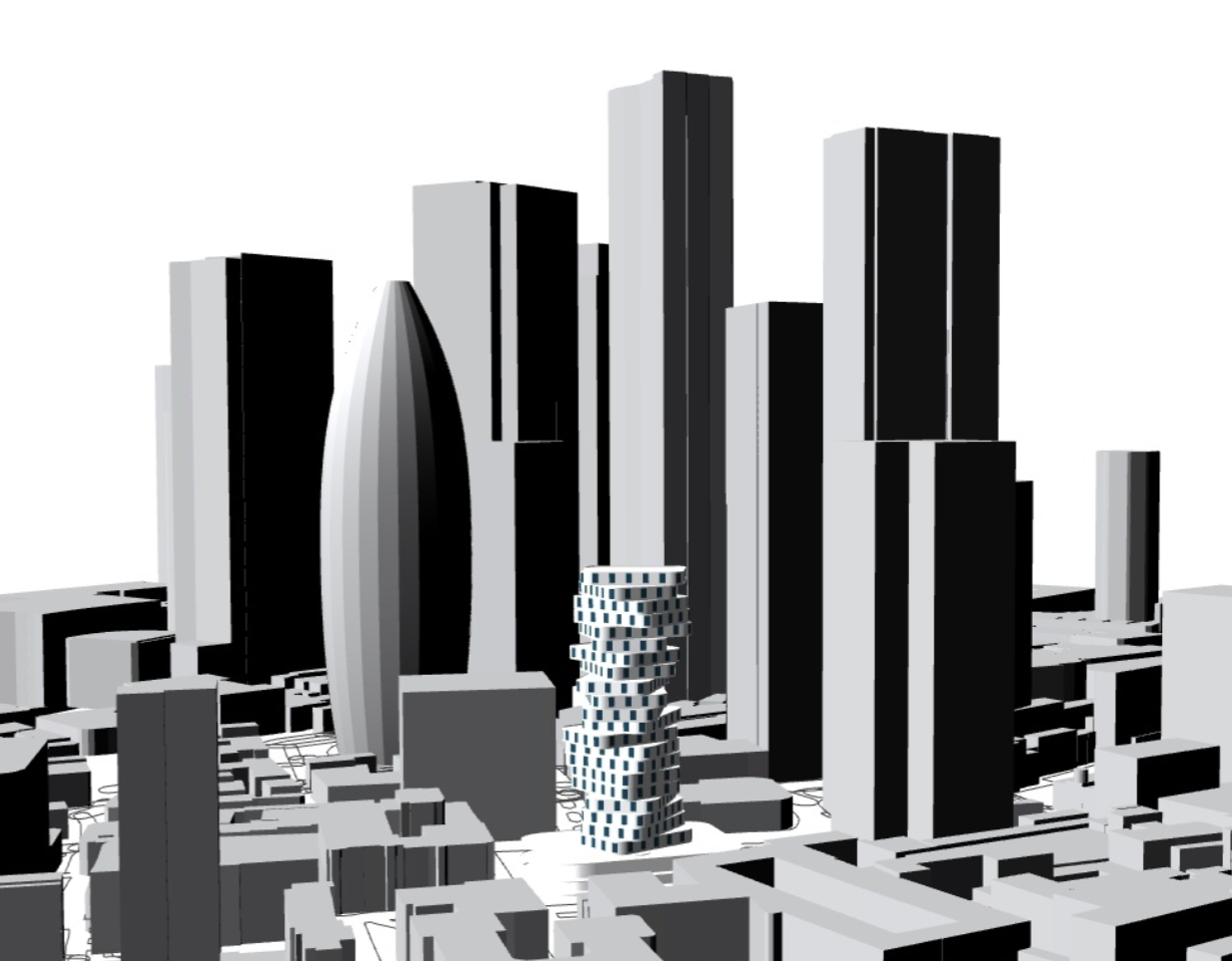
Introducing a podium substantially reduces uncomfortable zones on a pedestrian scale. Therefore, our proposal includes a podium with parking space below and softened edges for smooth wind flow.

